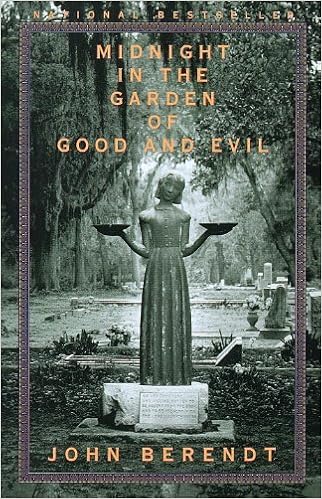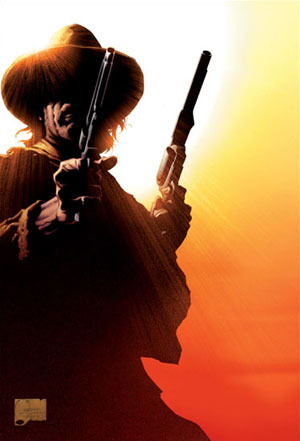by Dale C. Andrews (with much help from Kurt Sercu)
Escaping the glare and grime of summer in Manhattan, Ellery Queen, the celebrated novelist and gentleman detective, arrives in the small New England town of Wrightsville looking for a quiet place to write a new book . . . .
Playbill from Calamity Town
A theatrical presentation by Joseph Goodrich
New Dramatists New York City read-through
January 29, 2013
January 29, 2013
[Ellery's] exploits [in] Wrightsville [are always] likely to be the signal for the commission of one or more murders.
Julian Symons,
Bloody Murder (From the Detective Story to the Crime Novel: A History)
1972
[The book] is a story of an actual murder . . . . The cast includes . . . the author himself, transplanted temporarily from the Upper West Side to Savannah's gossipy historic quarter.. . . [T]he murder happens in the middle of the book.
John Berendt,
describing his best seller Midnight in the Garden of Good and Evil September 28, 1997 interview
I am writing this on board Amtrak’s Auto Train, heading home to Washington, D.C. And that seems only appropriate. Just over ten years ago I was excitedly preparing to leave by train for New York City to attend the Ellery Queen Centenary Symposium hosted by Ellery Queen Mystery Magazine. Kurt Sercu, proprietor of the seminal Ellery Queen website, Ellery Queen: a Website on Deduction, had flown to Washington, D.C. from his native Belgium so that we could take the train up to New York together. So excitement was in the air -- I had known Kurt for some years on-line, but given the distances between the District of Columbia and Bruges, the Belgian city where Kurt and his wife Martine reside, we had (understandably) never met in person before that trip to the symposium.
 |
| Kurt Sercu and me -- a photo pastiche |
Just before leaving for the train station I checked the thread one last time and found a question posed to Kurt and me by Doug Greene, well known to all of us as the brains (as well as brawn) behind Crippen & Landru, the preeminent publisher of all things mystery. Doug’s question was this: In the Ellery Queen novels we generally encounter Ellery feverishly working on his latest novel while he is also solving the mystery at hand. So, what were the books Ellery was writing? Were they other actual, i.e. published, Ellery Queen mysteries, or were these, perhaps, fictional references to works that do not, in fact, exist?
 |
| Doug Greene, proprietor of Crippen & Landru |
But, as with all things Ellery Queen, the answer, on reflection, is not all that easy. Melodie Campbell's article yesterday focused on authors whose protagonist is modeled after themselves. Well, suffice it to say that things can get particularly complicated -- at times even surreal -- when the author’s name on the spine of the book and the detective solving the case between the covers are one and the same. In any event, I continued to ponder Doug’s question over the last ten years.
And as I pondered it became evident that no one answer is apparent. Ellery is often in the midst of writing a novel while he is solving a mystery, but rarely, if ever, are any clues given as to what novel our friend is in fact writing at the time. In fact, the Queen library contains very few references that even tie the various books together. There are, of course, shared characters -- Ellery, the Inspector, Sergeant Velie, Dr. Prouty, Djuna (early on), Nikki Porter (later) and Paula Paris (in Hollywood). Recurring characters are also and even more prevalent in the Wrightsville mysteries
-- Chief Dakin, and later Chief Anselm Newby, town gossip Emmeline DuPré, newspaper editor Frank Lloyd, to name a few.
-- Chief Dakin, and later Chief Anselm Newby, town gossip Emmeline DuPré, newspaper editor Frank Lloyd, to name a few.
While rarer, there are also instances where the Queen mysteries refer to earlier works -- The Finishing Stroke, for example, references The Roman Hat Mystery. And Last Woman in his Life begins precisely (same day, same locale) where the earlier Face to Face leaves off. Similarly, the Wrightsville books at times refer to previous mysteries solved by Ellery in that “calamitous” town. But these references, while tying books together, usually tell us nothing concerning the novels Ellery was working on while solving the depicted mystery.
In the 1975 NBC Ellery Queen series there are scattered references to Ellery Queen mysteries that do not in fact exist -- "The Mad Hatter’s Tea Party" episode, for example, references a non-existent Queen mystery entitled The Adventure of the Alabaster Apple, and "The Adventure of the Lover’s Leap" episode involves an equally non-existent Queen opus of the same name. But, again, all of these references, even those in the TV episodes drafted by others, are, in each instance, to already completed works, not to the works in progress, novels that Ellery is depicted as struggling to complete while he is also grappling with the mystery at hand.
Ellery Queen novels do, at times, refer to other cases solved by Ellery that have not appeared in print -- such as the reference in Ten Days Wonder to “the case of the spastic bryologist, in which Ellery made the definitive deduction -- from a dried mass of sphagnum no larger than his thumbnail
-- and reached into the surgery of one of New York’s most respectable hospitals to save a life and blast a reputation . . . .” Nowhere is that mystery set forth in published form. And Ten Days’ Wonder also contains a reference to “the case of Adelina Monquieux, [Ellery’s] remarkable solution of which cannot be revealed before 1972.” That mystery was never recorded in a Queen work, though it did provide the premise for Francis Nevin’s 1972 Ellery Queen pastiche “Open Letter to Survivors.” (In "Open Letter" Ellery is working on a novel that clearly is "Cat of Many Tails," but this does not progress our analysis here since the story was written by Mike Nevins, not by Dannay and Lee!)
Similarly The French Powder Mystery and The Dutch Shoe Mystery mention, respectively, the Kingsley Arms Murder and The Murder of the Marionettes, and Dutch Shoe goes so far as to state that the latter mystery was recounted in a manuscript authored by Ellery. But none of these mysteries is in fact the basis of an Ellery Queen manuscript. Moreover, these references, again, are all to mysteries, or manuscripts, already completed, not to novels that are in the process of being drafted.
-- and reached into the surgery of one of New York’s most respectable hospitals to save a life and blast a reputation . . . .” Nowhere is that mystery set forth in published form. And Ten Days’ Wonder also contains a reference to “the case of Adelina Monquieux, [Ellery’s] remarkable solution of which cannot be revealed before 1972.” That mystery was never recorded in a Queen work, though it did provide the premise for Francis Nevin’s 1972 Ellery Queen pastiche “Open Letter to Survivors.” (In "Open Letter" Ellery is working on a novel that clearly is "Cat of Many Tails," but this does not progress our analysis here since the story was written by Mike Nevins, not by Dannay and Lee!)
Similarly The French Powder Mystery and The Dutch Shoe Mystery mention, respectively, the Kingsley Arms Murder and The Murder of the Marionettes, and Dutch Shoe goes so far as to state that the latter mystery was recounted in a manuscript authored by Ellery. But none of these mysteries is in fact the basis of an Ellery Queen manuscript. Moreover, these references, again, are all to mysteries, or manuscripts, already completed, not to novels that are in the process of being drafted.
In an email exchange I had with Joe Goodrich, author of the theatrical version of Ellery Queen’s Calamity Town, Joe mentioned that from various clues in Ten Days’ Wonder one could conclude that the novel Ellery toiled on during the course of solving that mystery might well have been Cat of Many Tails, actually published two years later. But other than that one possible example, and it is premised on fairly obscure clues, there is nothing that directly answers Doug Greene’s question.
Nothing that directly answers. But what about indirectly?
After first despairing that there is no good answer to Doug’s question, I took another look at Calamity Town. And when I did so it struck me that this mystery’s structure is remarkably similar to John Berendt’s “true crime” bestseller Midnight in the Garden of Good and Evil. The quote at the head of this article really says it all.
In Garden of Good and Evil the author, John Berendt, is a character in his own story. Berendt uproots himself from his hometown (New York City) to another locale (there, Savannah) for the sole purpose of secluding himself while writing a book about the characters that populate that locale. Berendt's tale purports to be written in real time, but the narration begins before the story itself has transpired. Then, in mid-book, a murder takes place. And the murder -- seemingly unanticipated at the beginning of the book -- becomes the book’s backbone by mid-narrative. So, the surreal aspect of the book is that it’s narrative, based on actual events, begins before the crucial events of the story have even occurred. In other words, the book that John Berendt is “writing” during the narrative of Midnight in the Garden of Good and Evil is in fact Midnight in the Garden of Good and Evil. And he is writing this as the story unfolds.
With that in mind, and being careful, as always, to stear clear of “spoilers,” let's compare Calamity Town to Garden of Good and Evil.
First, and most obvious, we are confronted with one of the stranger quirks of the Ellery Queen mysteries. Ellery, like John Berendt, is both the author and the protagonist. Each tale opens with the arrival of the author, in our case our friend Mr. Queen, in a town where the author intends to stay for a prolonged period. Thus, Calamity Town opens with Ellery disembarking from the train in Wrightsville. He immediately seeks rental accommodations and is asked:
First, and most obvious, we are confronted with one of the stranger quirks of the Ellery Queen mysteries. Ellery, like John Berendt, is both the author and the protagonist. Each tale opens with the arrival of the author, in our case our friend Mr. Queen, in a town where the author intends to stay for a prolonged period. Thus, Calamity Town opens with Ellery disembarking from the train in Wrightsville. He immediately seeks rental accommodations and is asked:
"[W]hat kind of work are you planning, . . ?”
“A novel," said Ellery faintly. "A novel of particular sort, laid in a typical small city . . . ."
Ellery then, like John Berendt, settles in, and waits for events to occur. And for Ellery that wait is not without a degree of impatience. When, at first, town life in Wrightsville proceeds without incident, that is, without murder, this coincides with grumblings on Ellery’s part that his novel is progressing slowly. Thus, a ways into the book we encounter the following:
So Mr. Queen decided he had been an imaginative fool and that [any mystery in the town] was buried beyond resurrection. He began to make plans to invent a crime in his novel, since life was so uncooperative. And, because he liked all the characters, he was very glad.
This, in itself, is an interesting (and doubtless tongue-in-cheek) aside by Ellery. There have been a lot of jokes over the years to the effect that if you value your life you shouldn’t hang around with Ellery Queen since someone in his immediate ambit always ends up murdered. And here we have it -- the proof: Ellery expects a murder in Wrightsville. And, while grumpy, he is also heartened since he likes the folks he has encountered in Wrightsville. Important to our current analysis is the fact, then, that like John Berendt Ellery purports to be writing his book in anticipation of a murder happening. Also like Berendt he is not disappointed.
 |
| Wrightsville as depicted in the front-piece of Calamity Town |
"It’s a queer thing," grumbled Ellery, " . . . Something’s been annoying me for weeks. Flying around in my skull. Can’t catch it… I thought it might be a fact—something trivial—that I’d overlooked. You know, I… well, I based my novel on you people—the facts, the events, the interrelationships. So everything’s in my notes that’s happened." He shook his head. "But I can’t put my finger on it.”
And finally, when the mystery of Calamity Town is ultimately solved, eo instante the novel Ellery has been drafting is also completed. Listen to Ellery when he returns, to Wrightsville, in the final pages of Calamity Town:
“But tell me! What brings you back to Wrightsville? It must be us—couldn’t be anyone else! How’s the novel!”
“Finished.”
"Oh, grand! Ellery, you never let me read a word of it. How does it end?”
“That,” said Mr. Queen, “is one of my reasons for coming back to Wrightsville.”
So, if you are reading either Calamity Town or Midnight in the Garden of Good and Evil, and someone wanders over and poses that question Doug Greene asked Kurt and me ten years ago, specifically what is the book the author purports to be writing at the same time he is telling his story, the answer in each case is the same. Surreal as it may seem, the book each author was writing is the book that you are reading!
* * * * * * * *

The play had a public reading in New York in 2013, was first produced in 2014 in preview in Claremont, New Hampshire (a town that in all likelihood provided the model for Wrightsville) under the staging hand of Arthur Vidro.
It will now have its official world premiere this coming January 23 through February 21 at the Vertigo Theatre in Calgary, Canada. If you are anywhere near Calgary, try to catch it. I only wish I could!





































